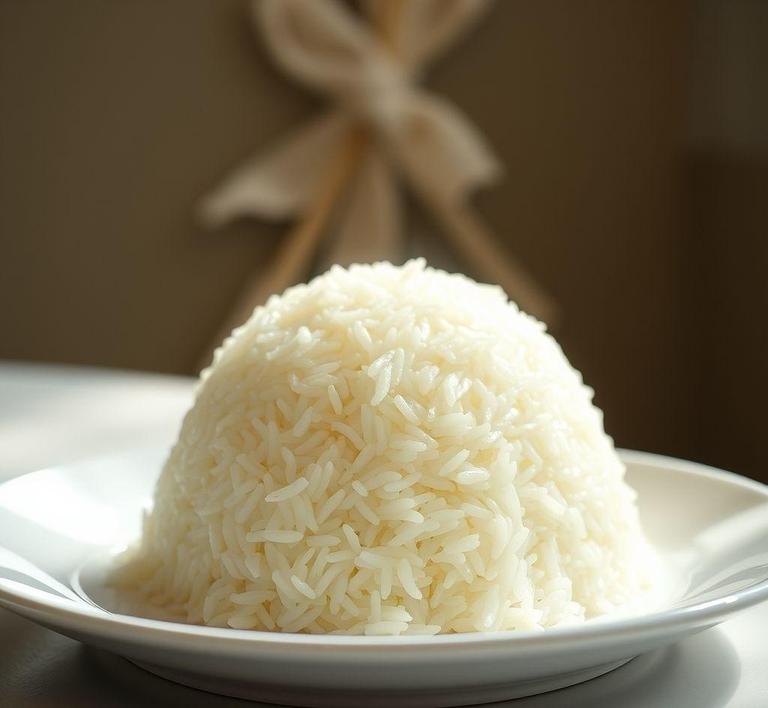Refreezing rice might sound a little strange at first, but it’s actually a pretty handy skill to have, especially when you’ve made too much and don’t want to waste any food. While rice is a pantry staple in many homes, knowing how to properly store it after cooking can save you a lot of hassle. If you’ve cooked up a big batch and are wondering whether it’s safe or smart to refreeze it, the good news is-yes, you can! The key is to handle it correctly from the start to preserve its texture and flavor. Let’s dive into the best methods to refreeze rice without compromising quality.
Can You Refreeze Rice?

Rice is one of the most widely consumed foods worldwide, revered for its versatility, nutritional value, and ease of preparation. However, when it comes to storing and reheating leftover rice, a common question arises: Can you refreeze rice? The short answer is yes, you can refreeze rice, but it’s not always the best practice, and there are some important considerations to keep in mind. The quality of the rice, the method of freezing, and how it’s handled before and after freezing can all influence whether the rice remains safe and tasty after being refrozen.
The core issue with refreezing rice revolves around both its texture and food safety. Rice, like most cooked foods, has a certain shelf life when frozen. Once it’s defrosted and exposed to air, bacteria can start to grow if it isn’t handled properly, leading to potential foodborne illnesses. Therefore, the decision to refreeze rice should only be made if you’ve taken the right precautions. Let’s dive deeper into the factors that influence whether refreezing rice is a safe and practical option.
How To Refreeze Rice?
If you’ve decided to proceed with refreezing rice, following the right steps is crucial to maintaining both its safety and quality. The key is to minimize the time the rice spends at room temperature and to ensure it’s stored in an airtight manner. Here’s a step-by-step guide on how to refreeze rice properly:
-
Cool It Down Quickly:
After cooking rice, it’s important to let it cool as quickly as possible to avoid the growth of harmful bacteria. This can be done by spreading the rice out on a large tray or placing it in a shallow dish. Ideally, the rice should be cooled to room temperature within two hours of cooking.
-
Portion the Rice:
Freezing rice in smaller portions makes it easier to defrost only what you need later. Divide the rice into airtight containers or freezer bags, making sure to remove as much air as possible. This helps prevent freezer burn and keeps the rice from developing a dry, unappetizing texture when reheated.
-
Label and Date:
Always label the storage containers with the date and type of rice. This ensures that you can keep track of how long it’s been in the freezer and use it within a reasonable time frame.
-
Freeze as Soon as Possible:
Once the rice has been portioned and packed, place it in the freezer immediately. The faster it freezes, the better the quality will be once you reheat it. Avoid leaving it sitting around at room temperature for too long after it has been prepared.
-
Defrost Properly:
When you’re ready to use the rice, take out the portion you need. To defrost, it’s best to leave it in the fridge overnight. If you need to defrost it more quickly, you can microwave it directly from frozen, but be sure to add a small amount of water to prevent it from drying out.
-
Refreeze Carefully:
If you’re not going to use all the defrosted rice, you can refreeze it, but only once. Be cautious of how long the rice has been sitting out after being thawed, as this can introduce bacteria. When refreezing, ensure that the rice is packed and sealed again properly, and remember that quality may decline after multiple freezing cycles.
Quality Impact
Refreezing rice can significantly impact its quality, especially in terms of texture, flavor, and moisture content. Here’s a breakdown of the primary quality concerns when refreezing rice:
-
Texture Deterioration:
One of the most noticeable changes when refreezing rice is the loss of texture. Rice, being a grain that absorbs moisture during cooking, tends to dry out or become overly mushy when subjected to freezing and thawing multiple times. The freezing process ruptures the rice grains, which causes them to lose their firm structure upon reheating. As a result, refrozen rice can feel more soggy or clumpy than fresh rice. The delicate balance of the grain’s fluffiness is often compromised.
-
Loss of Flavor:
The longer rice sits in the freezer, the more it can lose its original flavor. While freezing doesn’t strip rice of its essential flavor completely, the longer it’s stored, the more likely it is to develop a slightly stale or off taste. Additionally, if it’s not packaged tightly, it can absorb flavors from other foods in the freezer, further impacting its flavor profile.
-
Moisture Changes:
As rice freezes, the water content within the grains can expand, forming ice crystals. When you thaw and refreeze the rice, this moisture can be released in uneven amounts, leading to a change in the moisture balance of the rice. As a result, some portions might be drier, while others may be overly wet, creating inconsistency in texture and overall satisfaction.
-
Nutritional Decline:
Although freezing does a decent job of preserving the nutritional content of cooked rice, multiple cycles of freezing and thawing can lead to some loss of vitamins and minerals. While this isn’t a drastic effect, it’s worth keeping in mind if you’re trying to preserve the full nutritional value of the rice.
While it is technically possible to refreeze rice, it comes with a set of caveats that shouldn’t be overlooked. If you want to preserve the safety and quality of your rice, it’s essential to follow the correct freezing and defrosting protocols, including quick cooling, proper storage, and limiting how many times you freeze and thaw it.
Refreezing rice more than once can compromise its texture, flavor, and moisture balance, and may lead to a less enjoyable eating experience. For best results, try to freeze rice in smaller portions, use it within a few months of freezing, and avoid reheating it multiple times. By understanding the potential impacts on quality and taking the necessary precautions, you can enjoy your rice without worrying about safety or diminished taste.
Ultimately, while refreezing rice may not be ideal for preserving its peak flavor and texture, if done properly and sparingly, it can still be a convenient way to manage leftovers and reduce food waste. Always prioritize food safety and quality to make the most out of your rice dishes, and you’ll be able to enjoy them for a longer time.
Is It Safe To Refreeze Rice?
Rice is a staple food in many households and cultures, cherished for its versatility, simplicity, and ability to be stored easily. However, when it comes to the question of whether it’s safe to refreeze rice, the answer requires a bit of nuance. Technically, it’s safe to refreeze rice under certain conditions, but it isn’t always recommended due to potential risks associated with food safety and texture quality.
The main concern with refreezing rice lies in how it’s handled during its initial cooking, storage, and thawing phases. When rice is cooked, moisture is trapped inside the grains, creating the ideal environment for bacteria to thrive if not cooled or stored properly. Bacillus cereus, a type of bacteria that can cause food poisoning, is particularly problematic. It can survive cooking and grow rapidly if rice is left at room temperature for too long. If rice is frozen and then thawed, the bacteria can multiply quickly once it’s left to sit at warmer temperatures again. Therefore, it’s essential to cool the rice thoroughly before freezing it and ensure it’s stored in an airtight container.
When rice is refrozen, it undergoes another cycle of freezing and thawing, which can increase the likelihood of bacterial growth if the rice isn’t handled correctly. In general, it’s safe to refreeze rice that has been properly stored and handled throughout its freezing and thawing process. However, the quality may degrade each time it’s frozen and thawed, leading to mushy or overly dry rice, which is a texture issue that can affect the dish you’re preparing.
Signs That Rice Should Not Be Refrozen
While freezing rice can be a great way to preserve leftovers, not all rice should be refrozen. Certain signs can indicate that rice is no longer safe to refreeze, primarily due to bacterial contamination or improper storage.
- Off Smell or Sour Odor: If your rice has a sour, rancid, or off smell after being thawed, it’s a strong indication that bacteria have begun to grow, making it unsafe to refreeze. Freshly cooked rice has a neutral, slightly nutty aroma, so anything unusual means it should be discarded.
- Slimy or Sticky Texture: Once rice becomes slimy or overly sticky after being thawed, it’s often a sign that the starches have begun to break down, leading to the growth of harmful bacteria. This texture change is particularly common if rice has been left out too long before freezing or thawing.
- Discoloration: If you notice any discoloration in the rice, such as dark spots or an uneven color, it’s a warning sign that spoilage might be occurring. This could also mean that the rice has been stored improperly and should be thrown out instead of refrozen.
- Excessive Moisture or Water: Rice that’s soggy or watery after being thawed may have been exposed to air or moisture during its initial freezing and storage. This excess moisture can promote bacterial growth, and refreezing it in this condition can increase the risk of foodborne illness.
- Time and Temperature Abuse: If the rice was left out for extended periods (more than two hours at room temperature) before freezing or after being thawed, it’s better to discard it. Refreezing rice that has been exposed to unsafe temperatures for too long can cause bacteria to proliferate, making it dangerous to eat.
Common Refreezing Mistakes
Refreezing rice is more than just tossing it back into the freezer; the process must be done carefully to prevent both bacterial contamination and texture degradation. Here are some common mistakes people make when freezing and refreezing rice:
- Not Cooling Rice Properly Before Freezing: One of the most common mistakes is failing to cool rice thoroughly before freezing it. Rice should be cooled to room temperature within one to two hours after cooking to prevent bacteria growth. If left to cool too slowly or stored improperly at room temperature, the risk of foodborne illness increases.
- Freezing Rice in Large Clumps: Freezing rice in large clumps can result in uneven freezing and make it harder to thaw and reheat properly. When rice freezes in large chunks, it can become mushy or soggy once thawed. It’s best to spread rice out into a thin layer on a baking sheet before freezing it and then transfer it to a container or bag once fully frozen.
- Not Using Airtight Containers: If you’re not storing rice in airtight containers or freezer bags, moisture can get in, causing freezer burn and degrading the texture and taste of the rice. Using high-quality, vacuum-sealed bags or containers ensures that rice remains protected from external moisture.
- Thawing Rice at Room Temperature: One of the most dangerous mistakes is leaving rice to thaw at room temperature. This can allow bacteria like Bacillus cereus to thrive. Instead, always thaw rice in the refrigerator overnight or use the microwave or stovetop to reheat it directly from frozen.
- Refreezing Rice Multiple Times: While refreezing once is generally okay if the rice was stored properly, repeatedly freezing and thawing rice increases the risk of contamination. Each freeze-thaw cycle degrades both its texture and flavor, so it’s better to avoid refreezing multiple times.
Tips And Tricks
If you’re determined to freeze and refreeze rice without sacrificing quality or safety, here are some useful tips and tricks to keep in mind:
- Cool Rice Quickly: To prevent bacterial growth, spread rice out on a baking sheet or large plate to cool it faster before freezing. If you’re in a hurry, you can even place the sheet in the refrigerator for a short while to speed up the cooling process.
- Portion Control: When freezing rice, it’s a good idea to portion it into individual or meal-sized servings. This way, you can thaw only what you need without exposing the entire batch to multiple cycles of freezing and thawing.
- Use Freezer Bags or Vacuum-Sealed Containers: To keep rice as fresh as possible, use freezer-safe bags that you can squeeze the air out of, or opt for vacuum-sealed containers that will prevent moisture from ruining your rice.
- Reheat Properly: To maintain the best texture and flavor, reheat rice in a microwave with a splash of water to add moisture back. You can also reheat rice in a pot on the stovetop, adding a little water or broth to steam it back to its original texture.
- Freeze Rice Immediately After Cooking: If you plan on freezing rice, do so as soon as it’s cooked and cooled properly. The longer rice sits before freezing, the more likely it is to spoil or become contaminated, especially if it has been left out at room temperature.
Conclusion
Refreezing rice can be a safe and convenient option if done correctly, but it requires careful handling to avoid potential food safety risks and degradation in quality. The key to safe refreezing is ensuring the rice is cooked, cooled, stored, and thawed properly. If rice has been exposed to improper temperatures or shows signs of spoilage, it should not be refrozen. By following proper storage techniques, avoiding common mistakes, and using good judgment when it comes to texture and smell, you can extend the life of your rice without compromising safety. Just remember, while it may be safe to refreeze rice once, it’s best to limit the number of freeze-thaw cycles to maintain its quality and freshness.


